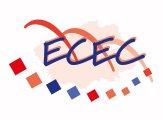
Conference Themes
The 15th Annual European Concurrent Engineering Conference 2008 is structured around the following ten major topics: (To submit a paper click on the links below)
- 1.1 Organizational influences of e-business
- 1.2 B2B business models for inter-organizational CE
- 1.3 Migration to e-business based CE
- 1.4 E-business applications for CE
- 1.5 B2B portals for CE
- 1.6 Emerging standards (e.g. XML, UML)
- 1.7 E-Procurement, E-Supply, E-Engineering, ....
- 2.1 Principles of CE
- 2.2 Multi-disciplined team-working and project team organisation
- 2.3 Global product development and international collaboration
- 2.4 Life-cycle cost and quality
- 2.5 Business process re-engineering and outsourcing
- 2.6 Supply chain management
- 2.7 Measurement of profitability by the introduction of CE
- 3.1 Digital mock-up
- 3.2 Virtual prototyping
- 3.3 Rapid prototyping
- 3.4 Synthetic environments and simulation on the factory floor
- 3.5 Reverse engineering
- 3.6 Assembly and disassembly
- 3.7 High precision manufacturing
- 3.8 Intelligent Manufacturing
- 3.8 Sensor and robot assisted machining
4.Formal Methods and Techniques
- 4.1 Quality Function Deployment
- 4.2 Total Quality Management
- 4.3 Global Optimization Techniques and Hybrid Approaches
5.Engineering of Embedded Systems
- 5.1 HW/SW C-Design
- 5.2 System Development Process
- 5.3 Specification Languages
6 Engineering data management and information modeling
- 6.1 Integration of geometrical data and product definition
- 6.2 Product data interchange (PDI) and standards
- 6.3 Data handling, distribution and transformation
- 6.4 Data version control and management
- 6.5 Corporate technical memory
- 6.6 Design rationale and intent
7 Engineering Process Management and Modelling
- 7.1 Process planning in continuous, discrete and hybrid processes
- 7.2 Process modeling, monitoring and control
- 7.3 Diagnostics and maintenance
- 7.4 Automated inspection and quality control
- 7.5 Production planning, scheduling and control
- 7.6 CE metrics
- 7.7 CE process planning, scheduling and simulation
- 7.8 Workflow-management in CE
- 7.9 Project and team coordination
8 Collaborative CE environments for virtual teams
- 8.1 Cooperative problem solving
- 8.2 CSCW methods and tools
- 8.3 Information and application sharing
- 8.4 Computer-based video and audio conferencing and consulting
- 8.5 Conflict resolution techniques
- 8.6 Constraint management
- 8.7 Negotiation, blackboard and agent-based architecture
- 8.8 CORBA based environments and integrated frameworks
- 8.9 Architectures for building CE systems
- 8.10 CE languages and tools
- 8.11 Distributed computing environments
- 8.12 WWW based CE systems
- 8.13 Mobile CE systems
- 8.14 Networking and Distribution in CE
9 CE Enhanced Lean Manufacturing
- 9.1 Work Standardization
- 9.2 5S Workplace Organization
- 9.3 Visual Controls
- 9.4 Batch Size Reduction
- 9.5 Points of Use Storage
- 9.6 Quality at the Source
- 9.7 Workflow Practice
- 9.8 Improved Information and Product Flow
- 9.9 Cellular Manufacturing
- 9.10 Pull & Synchronous Scheduling
- 9.11 Six Sigma & Total Quality
- 9.12 Rapid Setup
- 9.13 Work Teams for Cell Management & Process Improvement
- 9.14 Simplified scheduling and Kanban inventory management
10 Practical applications and experiences
- 10.1 Practical solutions
- 10.2 Systematic guide-lines
- 10.3 Pitfalls and success stories
- 10.4 Case studies, pilot projects and experiments in aerospace, shipbuilding etc..
A globally competitive business environment demands from the engineering companies to focus on reduced time to market and optimum cost of manufacturing during product design and development phases. These objectives are being achieved partially or wholly by applying a host of techniques by various industries.Concurrent engineering has evolved as one of the techniques that is capable of providing such solution irrespective of the type of industries. The CEO's, Managers and employees of various organisations may already be using methods and techniques which form the basis of a Concurrent engineering environment. This track is meant to gather a wide range of knowledge base from variety of industries as well as academia pertaining to the applications of concurrent engineering or other techniques to meet the global challenges of market sustenance for industrial products. Whether you are a CEO, Manager, Employee of any industrial concern or Academic involved in research and development of advanced techniques of concurrent engineering, your practical experience and its application is a source of knowledge for others. Therefore you are invited to contribute to this Track as well as share knowledge and experience of individuals involved in similar activities around the world.











